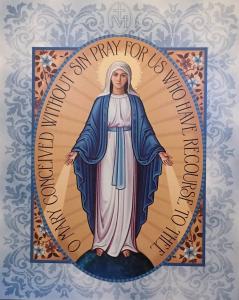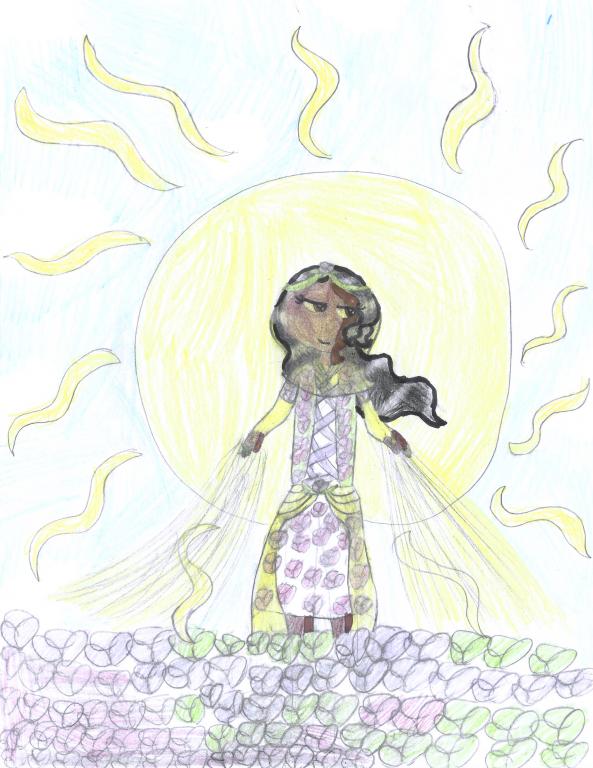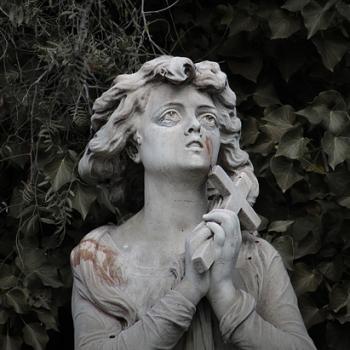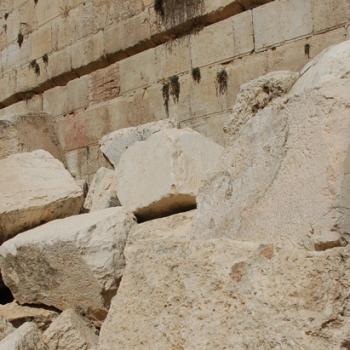This week, Catholics celebrate two major Marian feasts: the Immaculate Conception on December 8, and Our Lady of Guadalupe on December 12. I love that both of these feasts bring our attention to supernatural apparitions in female form that speak the ineffable words: “I AM.”
Our Lady of Guadalupe is the earliest of the Marian apparitions officially “approved” by the Catholic Church as “worthy of belief.” According to the Nican Mophua, in December 1531, a poor native Mexican man encountered a radiant female figure who told him, “I am the Ever-Virgin Holy Mary, Mother of the God of Great Truth.” She proved herself to the skeptical Bishop—and ultimately hundreds of millions of believers—by creating a miraculous icon of herself on Juan Diego’s mantle (tilma).

The Feast of the Immaculate Conception dates back at least to the 15th century, but its importance in popular Catholic piety was elevated by the apparitions of Bernadette Soubirous in Lourdes, France, in 1858. Like the figure who spoke to Juan Diego, the lady Bernadette described was a diminutive young woman who spoke to a humble peasant with great respect. At the behest of skeptical local clergy, Bernadette asked this lady for her name. After several times responding to this question with only a smile, the lady finally said “I am the Immaculate Conception.” This phrasing has been a puzzle to believers, since immaculate conception as a dogma describes an event—the conception of Jesus’s mother Mary without original sin—rather than a person.
These aren’t the only church-approved apparitions in which the celestial woman states what “I am.” Other identifiers given to various seers have included “Queen of Heaven,” “Virgin of the Poor,” and “Mother of all the Nations, who once was Mary.” Unlike visions of Jesus that have been deemed credible by the Catholic hierarchy, these revelations in female form always seem to need to identify themselves, and do so with titles of sweeping authority.

In these apparitions, “Mary” seems to be much more than the ghostly presence of a woman who submissively agreed to be the gestational vessel of Jesus. She is more than an acquiescent angelic messenger conveying an oracle dictated by a Divine Person who is wholly other from her. She speaks as one having authority and power.
Are these apparitions actually God self-revealing with a feminine human face? The possibility fascinates me. In trying to puzzle out why the Lady at Lourdes would say “I am the Immaculate Conception,” St. Maximilian Kolbe speculated near the end of his life that Mary, the mother of Jesus, was the created Immaculate Conception, while the Holy Spirit is the uncreated Immaculate Conception. In essence, his understanding of the title suggested that Mary the human being was something analogous to the incarnation of the Third Person of the Trinity (he used the term transubstantiated instead).
Meanwhile, the Lady revealed on the Mexican tilma is seen by many, especially in Latin America, as the feminine face of God the Creator, the First Person of the Trinity. As Father Virgilio P. Elizondo wrote in Guadalupe: Mother of the New Creation,
Having clearly identified herself in every way as having divine authority and nobility, she now comes to the core of the revelation: she wants to be the very personal mother of all the inhabitants of “the nations.” She is not just the mother of the gods of the Indians’ ancestors or the Ever-Virgin Mary of the Christians but is also the ever-present and listening mother of each and every inhabitant of the nations. Everyone can come to her without fear or hesitation. She is here and will always be here to listen, comfort, console, heal, and give life. She demands nothing of us; she asks only to be ever-present to respond to our cries and lamentations and remedy our ills. …
Many titles have been given to her over the ages, but I do not know of any that is uttered more universally and with greater love and confidence than “Madrecita Querida” (Beloved Mother). Regardless of how theologians and dogmaticians explain it, for the people at large, she is the beloved maternal presence of God.
It is patently orthodox theology to say that God is not exclusively male, for how else could male and female humans be equally made in the image and likeness of God? Scriptures occasionally use maternal imagery to describe God, but arising from and for the instruction of a highly patriarchal ancient culture, the terminology of “Father” is far more common in the Bible. The Creeds and liturgies developed by the consensus of male clerics in the Old World intensified the exclusively male depictions of God.
When missionaries came to the New World, some of them had high ideals of establishing Christianity among a new people, free from the corruptions of the politically powerful Church of the Old World. They wished to reconceive the church immaculately, if you will. But the native peoples could see little virtue or attraction in a religion that proclaimed a father without a mother, and that secured adherence primarily by threat of punishment, in this world and the next. So God provided the missionaries and native peoples alike with a miraculous icon of divine maternity and solicitude, which to this day inspires and illuminates the faith of millions.
Is Our Lady of Guadalupe an icon of God’s feminine nature, or of a created agent mediating that same nature? Is the Immaculate Conception a statement about a particular individual receiving life in a particular womb, or a conception in the mind of God that takes on flesh in more than one way? I’m not sure it matters. In either case, we can see from these Marian revelations that we are dealing with a God who gives us life, radiates a beauty that attracts and does not intimidate, and loves us with healing tenderness beyond all telling.












